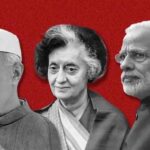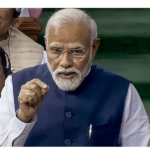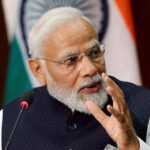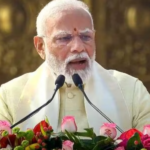In light of the fact that voters in five states have now cast their votes in a series of state assembly elections that have just recently finished, the attention of 1.4 billion Indians, as well as those who are viewing from outside, is now focused on the general elections of the country, which are anticipated to take place over the course of several weeks in April–May 2024.

The Bhartiya Janata Party (BJP), which is led by Prime Minister Narendra Modi, received a significant boost as a result of the results of the state elections that took place on December 3. The states of Chhattisgarh, Madhya Pradesh, and Rajasthan, which are located in the Hindi belt, were all won by the party in the elections. Telangana, which is located in the southern region of the country, was the sole district in which the opposition Indian National Congress (INC, also referred to as the Congress Party) emerged victorious.
Neither the Bhartiya Janata Party (BJP) nor the Congress Party played a significant role in the conflict in Mizoram. What is already general knowledge is confirmed by these results: with regard to the parliamentary elections that will take place in 2024, the Bhartiya Janata Party (BJP) continues to hold a strong position of leadership. One of the primary factors that contributes to this advantage is Modi’s everlasting popularity.
Morning Consult, a publication that monitors the weekly popularity ratings of more than twenty democratically elected foreign leaders, found that 78 percent of Indians who were polled in late November were satisfied with Modi’s performance on the job. This is a staggering +60, which is Modi’s net approval, which is computed by subtracting the percentage of respondents who disapprove of his performance from the percentage who approve of it.
Andrés Manuel López Obrador, the President of Mexico, has a net rating of “only” +30, making him the second most popular leader on the list. Since August 2019, when the data were initially made available, Modi’s approval has been surprisingly steady, which is even more remarkable than the fact that it has been remarkable.1.

The results of polls conducted within India’s borders demonstrate that Modi’s popularity has not diminished, and this fact continues to contribute to the supremacy of his party. The Mood of the Nation poll, which is conducted every two years by India Today, has consistently demonstrated, including as recently as August 2023, that the National Democratic Alliance (NDA), which is led by the Bhartiya Janata Party (BJP), would easily secure a majority of seats in the Lok Sabha. This is the case even if the NDA’s majority decreases in comparison to its total in 2019 (which was 353 seats, as shown in figure 1).
On the other hand, elections are not predetermined coronations; rather, they are popular demonstrations of the will of the public through voting. Previous experiences, such the surprising shock that the previous administration of the National Democratic Alliance (NDA) experienced at the hands of the United Progressive Alliance (UPA) led by the Congress Party in 2004, provide evidence that Indian voters do not mindlessly acquiesce to the common knowledge of the moment.
At the beginning of the road leading to 2024, there are five topics that are worth keeping an eye on: the diminishing predictive value of state elections, the difficulty of opposition cooperation, the struggle for backward castes, the arms race of competitive welfareism, and the emergence of foreign policy as a popular concern.
The first thing that should be kept in mind is that the most recent elections for the state legislature have a limited capacity for prediction. It would be impolite to deny the Bhartiya Janata Party (BJP) the opportunity to celebrate, but it would be naïve for the party to imagine that these results can mechanically predict how voters in these five states will behave in the general elections that will take place the following year.

During a previous period in the history of Indian politics, academics identified a clear connection between the elections held at the state and national levels. According to the findings of Nirmala Ravishankar, a political scientist, candidates that were put up by state ruling parties in national elections performed better when the elections took place early on in the tenure of the state government. On the other hand, candidates who were nominated by state ruling parties and whose respective governments were well into their terms were punished in national elections with negative consequences.
Over the past few years, this association has been less significant. As seen in figure 2, the Congress Party was victorious in the assembly elections held in Chhattisgarh in December 2018, and it also triumphed over the Bharatiya Janata Party (BJP) in both Madhya Pradesh and Rajasthan. On the other hand, this advantage was only temporary. During the Lok Sabha elections, which took place fewer than six months after the parliamentary elections, the Bhartiya Janata Party (BJP) emerged victorious against the Congress Party in all three states.
The results were broken down by assembly constituency segments.2. The Telangana Rashtra Samithi (TRS), which was later renamed the Bharat Rashtra Samithi (BRS), won three out of every four seats in the elections held in the state of Telangana in 2018. However, the party was unable to replicate this success in the 2019 elections, as the Congress Party and the BJP collectively won seven out of seventeen parliamentary seats.
Considerations Regarding the Election Contest in India in the Year 2024
 In spite of this, there is a rationale for the belief that this association might be stronger in the year 2024 than it was in previous years. As a result of Modi’s exceptional popularity, voters have an additional motivation to support the Bhartiya Janata Party (BJP) in national elections. This is because their support only serves to strengthen his position. A fractured opposition provided the Bhartiya Janata Party (BJP) with assistance in its efforts to achieve a single-party majority in Parliament in both 2014 and 2019.
In spite of this, there is a rationale for the belief that this association might be stronger in the year 2024 than it was in previous years. As a result of Modi’s exceptional popularity, voters have an additional motivation to support the Bhartiya Janata Party (BJP) in national elections. This is because their support only serves to strengthen his position. A fractured opposition provided the Bhartiya Janata Party (BJP) with assistance in its efforts to achieve a single-party majority in Parliament in both 2014 and 2019.
In a number of constituencies, the Bhartiya Janata Party (BJP) was running against not a unified opposition but rather a number of opposition parties that were competing with one another in addition to their fight against the British government. There was a fragmentation of the opposition vote, which was an unavoidable consequence. It is not necessary for a candidate to gain a majority of votes in India’s first-past-the-post elections in order to win their seat; all they need to do is receive more votes than the candidate who came in second place.
As a result of suffering two consecutive electoral setbacks in Parliament, the opposition appears to be keen to gain knowledge from previous successes. The Indian National Developmental Inclusive Alliance, sometimes known as INDIA for short, is a new opposition group that was declared by more than two dozen opposition parties in the month of July.
In addition to the Congress Party, which has a presence across the entirety of India, the Dravida Munnetra Kazhagam, which is the party that is now in power in Tamil Nadu, and various Communist groups of varying ideologies are also members of the alliance. Even while the opposition alliance has been talking a good game about collectively taking on the BJP, it is going to have a difficult time doing so on at least three different fronts.
To begin, the alliance needs to reach a consensus on a shared platform that goes beyond merely expressing opposition to the BJP, which is led by Modi. In the election that took place in 2019, the BJP alliance received 45 percent of the vote, which indicates that they did not receive support from more than half of the country. It is necessary for the INDIA alliance to present an alternative vision for governance that sufficiently differentiates itself from the BJP, despite the fact that their shared anti-BJP stance provides a platform for the opposition.
Second, there is no leader in charge of the INDIA bloc at the moment. Because of this, it is at a significant disadvantage in comparison to the ruling alliance, which has a leader who is larger than life in the form of Modi.
Despite the fact that the opposition is correct in their assertion that India is a parliamentary democracy, in which the eventual prime minister will be selected by the party (or coalition) that holds a majority in the Lok Sabha, this statement fails to take into account the fact that Modi has successfully presidentialized the system over the course of the last ten years. If there is not a leader who can provide a counterbalance to Modi, the INDIA alliance runs the risk of being disbanded in the face of a popular incumbent.
At long last, the opposition has not yet reached an agreement over the distribution of seats. In order for INDIA’s member parties to be able to compete as a unified front, they will need to willingly sacrifice competing seats that they believe they “own” in order to make room for partners. It is much simpler to say than it is to do. In a number of states, including Punjab, constituent parties such as the Congress Party and the Aam Aadmi Party are fierce adversaries of the new government. In the state of West Bengal, the Congress Party and the Left Front have collaborated in order to remove Mamata Banerjee, the Chief Minister of the Trinamool Congress, from her position; however, they are now need to align their efforts.
The mathematics of the coalition does not necessarily result in the formation of coalition chemistry, even if the members of the alliance come to an agreement to let the past be the past. Consider the case of Uttar Pradesh in the elections that will take place in 2019. Whereas the Bahujan Samaj Party (BSP) and the Samajwadi Party (SP), which had been at odds with one another for a considerable amount of time, joined forces in order to prevent the Bhartiya Janata Party (BJP) from gaining power.
In spite of this grand coalition, the BJP alliance received fifty-one percent of the vote and won sixty-four seats out of a total of eighty. On the other hand, the BSP-SP alliance received thirty-nine percent of the vote but just fifteen seats.3)
The opposition alliance appeared to have a mathematical advantage on paper; at the time of the election in 2014, the SP and BSP combined received 42 percent of the vote, which was the same percentage as the BJP. Nevertheless, in the year 2019, math on paper was not a suitable replacement for the absence of chemistry in their daily lives.







